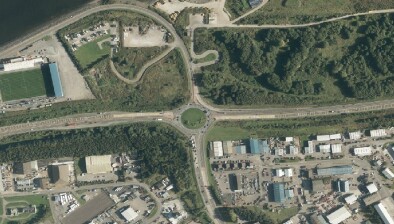And finally… 3D digital surveys of Forth Bridges to inspire learning
 A major new educational resource has been unveiled utilising 3D digital surveys of the three Forth Bridges.
A major new educational resource has been unveiled utilising 3D digital surveys of the three Forth Bridges.
This pioneering use of cutting-edge technologies by leading Scottish heritage institutions aims to inspire a new generation of scientists and engineers.
The new range of game-based learning resources was revealed for the first time by Deputy First Minister John Swinney on a visit to South Queensferry this week.
First announced in 2014, the £300,000 laser scanning project was one of the most challenging and complex 3D digital documentation projects undertaken anywhere in the world. It has amassed a 3D point cloud of many billions of dimensionally accurate points on the structures of the Forth Bridge, Forth Road Bridge and, at the time, the partially built Queensferry Crossing.
 With the laser scanning complete a further grant of £425,000 from Transport Scotland in 2017 enabled Scottish digital heritage experts to start work on developing learning games, design and coding resources, a location-based app, real-time interactive models for virtual headset tours and video fly-throughs all aimed at developing STEM skills among pupils in Scottish schools.
With the laser scanning complete a further grant of £425,000 from Transport Scotland in 2017 enabled Scottish digital heritage experts to start work on developing learning games, design and coding resources, a location-based app, real-time interactive models for virtual headset tours and video fly-throughs all aimed at developing STEM skills among pupils in Scottish schools.
Mr Swinney said: “The embedding of the Forth Bridges into teaching resources helps to demonstrate to pupils the wonders of modern digital technologies and to the extraordinary civil engineering from three different centuries we see sitting across the Forth.
“These fantastic new resources provide a powerful combination of jaw-dropping archival construction photographs with digital data taken from the 3D survey. This is cutting-edge technology being used in highly innovative ways to engage and inspire school pupils right across Scotland.
“I have no doubt we will realise our aim of generating interest in the bridges themselves and to stimulate take up in associated science and technology subjects using these resources in our schools.”
 Working with the assistance of a digital learning consultant, the Centre for Digital Documentation and Visualisation (CDDV) LLP (a partnership between Historic Environment Scotland and The Glasgow School of Art) has used its enormous digital datasets to create several teaching packages which incorporate lesson packs, practical resources and games, all of which are available free through Education Scotland’s Glow network. These include:
Working with the assistance of a digital learning consultant, the Centre for Digital Documentation and Visualisation (CDDV) LLP (a partnership between Historic Environment Scotland and The Glasgow School of Art) has used its enormous digital datasets to create several teaching packages which incorporate lesson packs, practical resources and games, all of which are available free through Education Scotland’s Glow network. These include:
In the future, the digital survey data for the three bridges may also be used to support monitoring and maintenance programmes, as well as developing interpretation resources and virtual access both at proposed visitor centres and online. In addition, the data will be able to support other applications such as site inductions, health & safety exercises, engineering calculations, and historic reconstructions.
In addition to CDDV (a partnership between Historic Environment Scotland and The Glasgow School of Art), Dundee City Council, Transport Scotland and Network Rail, other partners have contributed resources and expertise to the project. These include the National Records of Scotland, the Briggers (a Queensferry-based local history group), the Institution of Civil Engineers and the University of Aberdeen’s Special Collections.

















